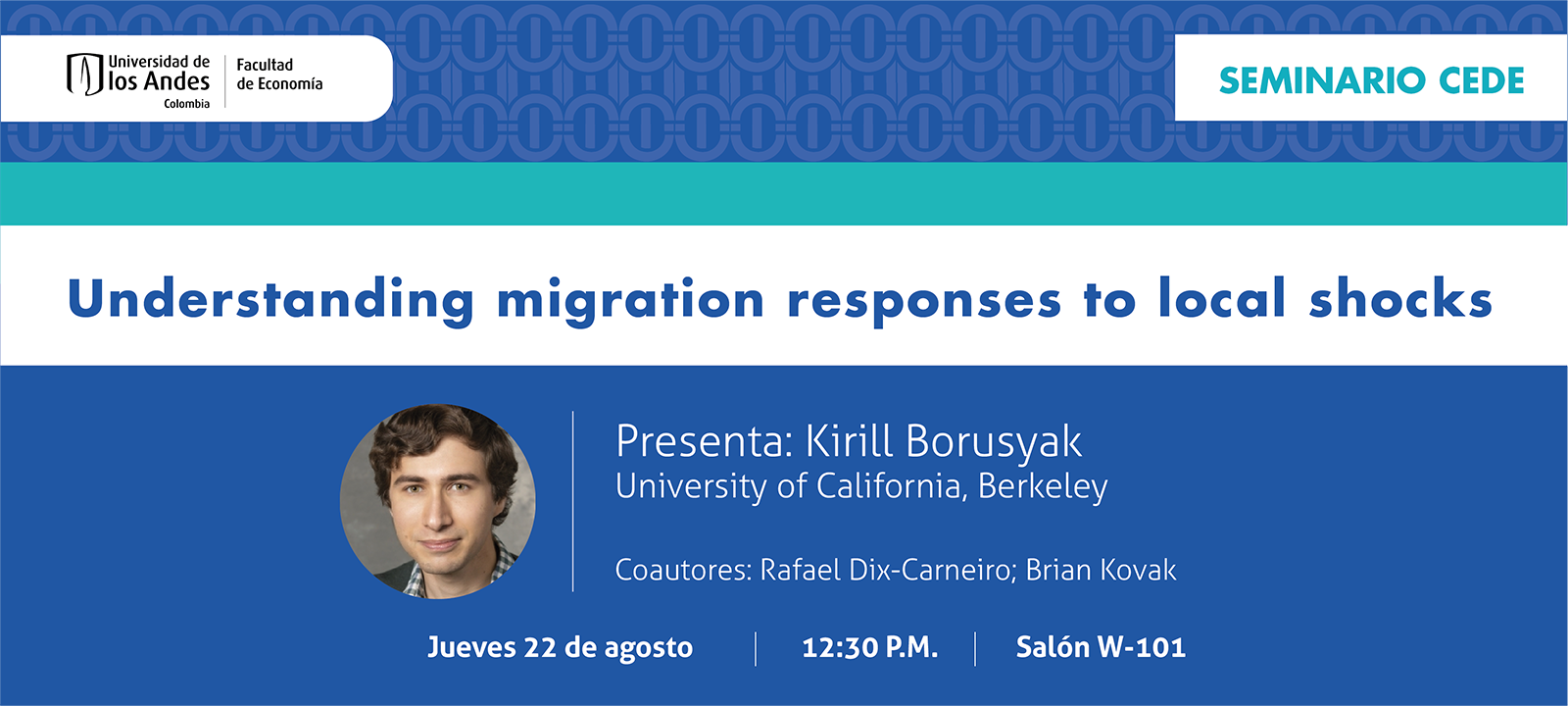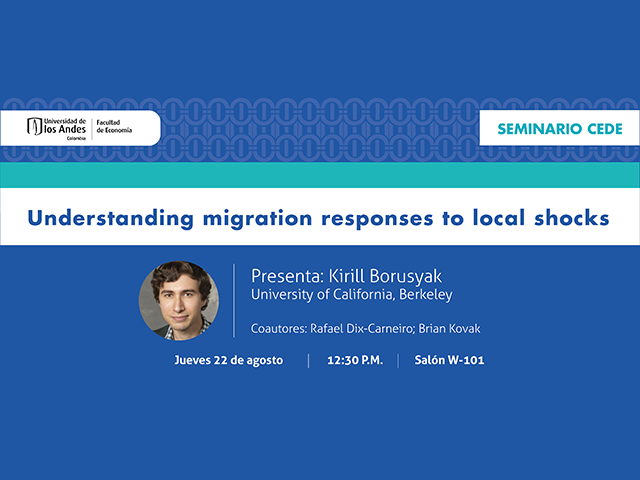Seminario CEDE - Kirill Borusyak

We examine how to interpret estimates from a commonly used migration regression relating changes in local population to exogenous local labor demand shocks. Using a simple model of local labor markets with mobility costs, we find that most conclusions drawn from migration regression estimates are likely to be substantially misleading. Intuitively, the conventional migration regression is misspecified due to the bilateral nature of location choices. Workers choose where to live based not only on the shock to their current location, but also on the shocks to potential alternative locations, which are omitted from the regression. Analytical results and simulations based on Brazilian data show that conventional migration regression estimates are inaccurate for the local population effects of either shocks to individual locations or all observed shocks taken together and often substantially understate the amount of worker reallocation driven by observed shocks. These problems are particularly acute when workers face industry switching costs in addition to geographic mobility costs. Simple alternative approaches leveraging the model’s structure exhibit far better performance.

